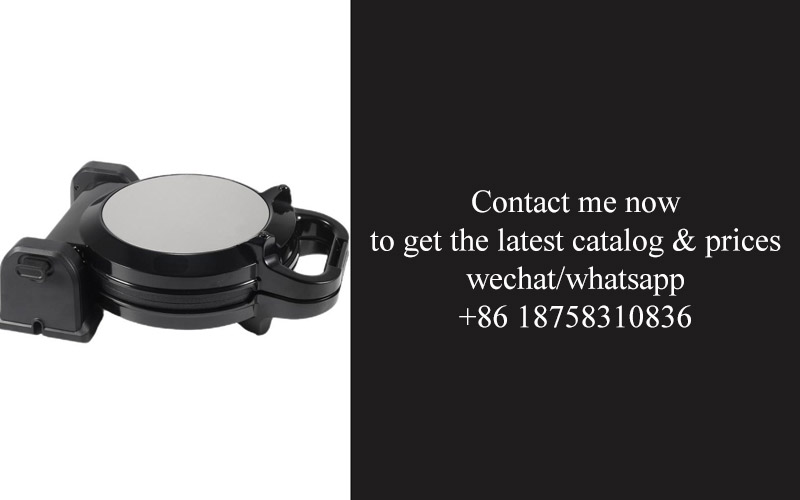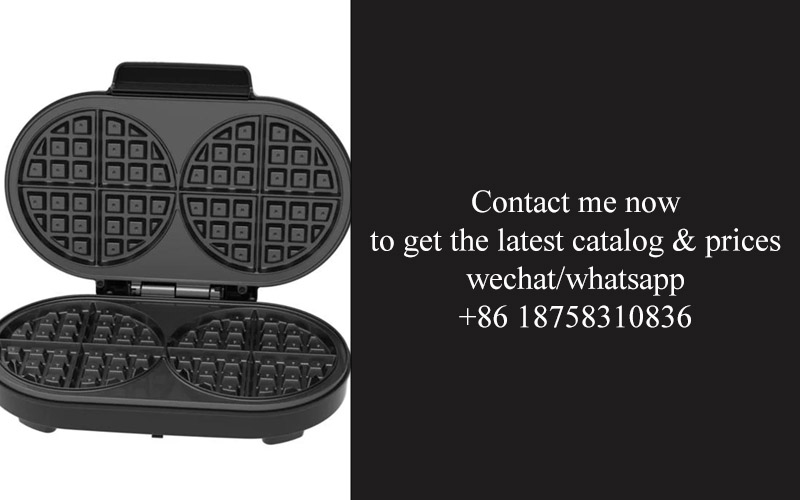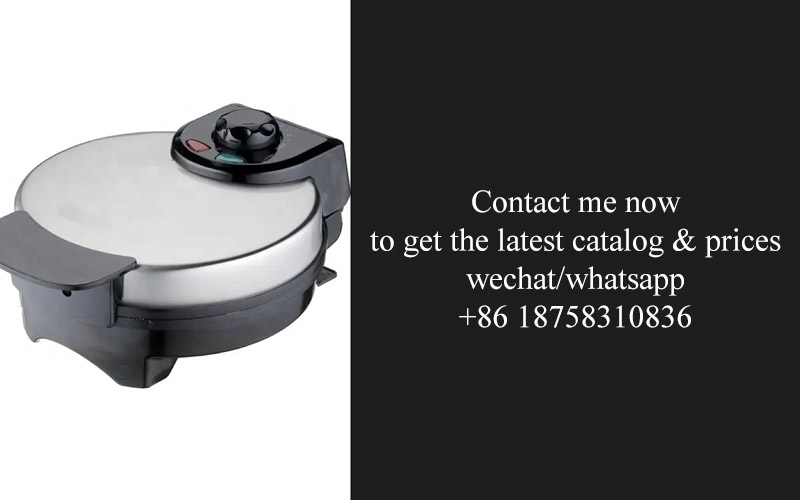Address
304 North Cardinal
St. Dorchester Center, MA 02124
Work Hours
Monday to Friday: 7AM - 7PM
Weekend: 10AM - 5PM
Address
304 North Cardinal
St. Dorchester Center, MA 02124
Work Hours
Monday to Friday: 7AM - 7PM
Weekend: 10AM - 5PM

As we delve into the ever-evolving world of kitchen appliances, it’s clear that innovation is the driving force behind the latest advancements. The intersection of technology and safety has become more crucial than ever, shaping the future of our cooking experiences. From smart kitchen appliances to eco-friendly cookware, the trends are pointing towards a seamless blend of convenience, health, and sustainability. Let’s explore how these trends are redefining the way we interact with our kitchen gadgets.
The kitchen, once a domain of basic appliances, has transformed into a high-tech command center, and at the forefront of this revolution are smart kitchen appliances. These innovations are not just about convenience; they’re reshaping our culinary experiences and setting the stage for what the future kitchen might look like.
From the sleek design of smart ovens that can preheat themselves with a tap on your smartphone to fridges that not only keep your groceries fresh but also offer a shopping list based on your usage patterns, the rise of smart kitchen appliances is a testament to the relentless pursuit of efficiency and connectivity. Imagine a world where your coffee machine knows you’re running late and automatically starts brewing, or where your oven can be controlled remotely while you’re out of the house, ensuring that dinner is ready as you walk in the door.
These smart devices are more than just tools; they’re becoming an integral part of our daily routines. They adapt to our needs, learn from our habits, and offer personalized experiences that go beyond mere functionality. The integration of artificial intelligence and machine learning has paved the way for appliances that can anticipate our actions and preferences, creating a seamless and intuitive cooking environment.
One of the most significant developments in the realm of smart kitchen appliances is the incorporation of voice control technology. With the rise of smart assistants like Amazon’s Alexa, Google Assistant, and Apple’s Siri, homeowners can now control their appliances with simple voice commands. This not only adds a layer of convenience but also makes the kitchen a more accessible space for individuals with mobility challenges or those who prefer hands-free cooking.
The design of smart kitchen appliances has also evolved to be more aesthetically pleasing, blending seamlessly into modern kitchen decor. The sleek lines and minimalistic designs of these devices are not only functional but also contribute to the overall aesthetic appeal of the kitchen. Manufacturers are now focusing on creating a cohesive look that integrates technology without overpowering the space.
But it’s not just about aesthetics and convenience; the rise of smart kitchen appliances is also driven by a desire for healthier living. Smart cookers and slow cookers, for example, offer precise temperature control and cooking times, which can lead to better-tasting meals with reduced fat and calories. These appliances are designed to encourage healthier cooking habits, providing users with information on nutritional content and cooking methods.
Moreover, smart kitchen appliances are becoming more energy-efficient, contributing to a greener lifestyle. Features like energy-saving modes, LED lighting, and smart sensors that detect room occupancy help reduce energy consumption, making these appliances not only smart but also sustainable.
The rise of smart kitchen appliances also reflects a shift in consumer expectations. People are no longer satisfied with just cooking; they want to enjoy the process and the outcomes. Smart appliances offer a level of engagement that was previously only available in the realm of high-end restaurants. With these devices, anyone can cook like a professional, with the precision and control that once required a chef’s expertise.
As we look to the future, it’s clear that smart kitchen appliances are just scratching the surface of what’s possible. Innovations such as 3D food printers, kitchen robots, and even appliances that can predict and prepare meals based on your mood or health data are on the horizon. These advancements will not only make cooking easier and more enjoyable but will also open up new possibilities for culinary exploration and expression.
In conclusion, the rise of smart kitchen appliances is not just a trend; it’s a revolution that is reshaping the way we interact with our food and our kitchens. It’s a glimpse into a future where technology enhances our lives, makes our homes smarter, and brings us closer to the culinary experiences we desire. As these devices continue to evolve, they promise to make the kitchen a place of innovation, efficiency, and joy.

In the ever-evolving world of kitchen appliances, one term that stands out as a beacon of quality and safety is LFGB compliance. The LFGB, or Lebensmittel- und Bedarfsgegenständegesetz, is a comprehensive German law that governs the safety and quality of food contact materials. This legislation is not just a regulatory framework; it’s a promise of excellence that has become a global standard for manufacturers and consumers alike.
The LFGB covers a vast array of products, from the materials used in cooking utensils to the packaging that protects our food. It’s designed to ensure that every item that comes into contact with food is free from harmful substances and meets stringent safety requirements. This law is particularly stringent in its approach, which is why it’s often referenced as the gold standard in the industry.
One of the key aspects of LFGB compliance is the testing and certification process. Manufacturers must undergo rigorous testing to prove that their products are safe for use. This includes analyzing the chemical composition of materials to ensure that they do not leach harmful substances into food or beverages. The tests are thorough, covering everything from heavy metal content to the migration of plasticizers and other additives.
The LFGB also addresses the issue of migration, which is the transfer of substances from the material of the appliance to the food or drink it comes into contact with. This is crucial because certain chemicals, if ingested over time, can pose health risks. The legislation sets strict limits on the amount of any substance that can migrate, thereby protecting consumers from potential health hazards.
Another important element of LFGB compliance is the labeling requirements. Products that are LFGB certified must clearly display the compliance mark, allowing consumers to make informed choices. This transparency is a significant step in empowering consumers to select products that meet the highest safety standards.
For European manufacturers, adhering to LFGB standards is not just a legal obligation; it’s a mark of distinction. It signifies that their products are not only safe but also of the highest quality. This is particularly important in the kitchen appliance industry, where the products are used daily and come into direct contact with food.
On a global scale, the LFGB has influenced other regulatory frameworks. Many countries have adopted similar standards, recognizing the importance of ensuring the safety of food contact materials. This has led to a more unified approach to product safety, making it easier for manufacturers to export their products internationally while maintaining the highest quality standards.
For consumers, understanding LFGB compliance is a vital part of choosing kitchen appliances. It means that the products they purchase have been tested and certified to be safe to use. This peace of mind is invaluable, especially when considering the potential health risks associated with the wrong materials in kitchenware.
The LFGB also addresses the environmental impact of kitchen appliances. It requires that materials used in manufacturing are environmentally friendly and sustainable. This not only reduces the carbon footprint of the products but also ensures that they are produced in a way that is respectful of natural resources.
In the realm of non-stick coatings, LFGB compliance is particularly relevant. These coatings are used on a wide range of kitchen appliances, from frying pans to baking dishes. The LFGB ensures that the coatings used are free from PFOA (perfluorooctanoic acid), a chemical that has been linked to health issues. This means that consumers can use non-stick cookware with confidence, knowing that it is not only non-toxic but also meets the highest safety standards.
The LFGB compliance process is not without its challenges. It requires manufacturers to invest in the necessary testing facilities and quality control measures. However, for those who are committed to producing safe and high-quality kitchen appliances, the effort is well worth it. It’s a testament to their dedication to customer satisfaction and the pursuit of excellence.
In conclusion, LFGB compliance is more than just a legal requirement; it’s a commitment to quality, safety, and environmental responsibility. It ensures that kitchen appliances are not only functional but also safe for everyday use. As the kitchen evolves with smart technology and innovative designs, the LFGB remains a cornerstone, guiding manufacturers and consumers towards a safer, healthier culinary experience.

The non-stick revolution has swept through kitchen appliances, transforming the way we cook and clean. This innovation has become a staple in modern kitchens, offering a multitude of benefits that enhance the cooking experience. Let’s delve into why this technological advancement is a game-changer.
Cooking with non-stick surfaces has become synonymous with ease and convenience. No longer do we need to worry about food sticking to our pans, leading to a smoother cooking process. This feature is particularly valuable for delicate ingredients that can break or burn easily, such as fish and eggs. The non-stick surface allows for healthier cooking, as there’s no need to add excessive amounts of oil or butter, reducing the calorie content of our meals.
The cleaning aspect of non-stick cookware is another area where the revolution shines. After a meal, the cookware is often ready for immediate cleaning. The non-stick surface prevents food particles from adhering to the pan, making it easier to scrub off any residue. This not only saves time but also simplifies the cleanup process, which is a significant factor in maintaining a well-organized kitchen.
Non-stick cookware is also versatile, suitable for a variety of cooking methods. Whether you’re sautéing, frying, or boiling, the non-stick surface provides a smooth cooking environment that allows for even heat distribution. This even cooking is crucial for achieving consistent results, whether you’re preparing a delicate sauce or a crisp, golden-brown crust.
Durability is a key consideration in modern cookware, and non-stick coatings have proven to be quite resilient. While the non-stick coating is not indestructible, high-quality products can withstand years of regular use. Advances in coating technology have made non-stick surfaces more durable than ever before, reducing the likelihood of scratches and wear that could compromise the non-stick properties.
Environmental concerns are also addressed by non-stick cookware. Since less oil is required to cook with non-stick surfaces, there is a reduction in the amount of oil that goes down the drain. This is not only better for the environment but also for our wallets, as it cuts down on the need for frequent oil purchases. Additionally, the ease of cleaning means that there is less soap and water used, further contributing to a more eco-friendly cooking experience.
The non-stick revolution has also had a significant impact on the health and wellness sector. For individuals with certain health conditions, such as celiac disease, which requires a gluten-free diet, non-stick cookware is a godsend. It eliminates the need for heavy cooking sprays and can help prevent cross-contamination. Moreover, for those following a healthier lifestyle, non-stick cookware is an excellent tool for reducing the calorie and fat content of dishes.
Another advantage of non-stick cookware is its versatility in terms of materials. While traditionally associated with Teflon, modern non-stick coatings are available in a variety of materials, including ceramic and stone. These alternative coatings often come with their own unique benefits, such as being free from harmful chemicals like PFOA and PFOS, which were once associated with traditional non-stick coatings.
In the culinary world, innovation is key, and the non-stick revolution is a testament to this. Chefs and home cooks alike are able to experiment with a wider range of ingredients and cooking techniques without the fear of sticking or burning. This opens up a world of culinary possibilities, from intricate dessert decorations to perfectly cooked pancakes.
The non-stick revolution has also influenced the way manufacturers design cookware. With a focus on non-stick technology, brands are pushing the boundaries of what cookware can do. We now see cookware with features like induction compatibility, ergonomic handles, and sleeker designs, all while maintaining the core benefit of easy cooking and cleaning.
In conclusion, the non-stick revolution has reshaped the cooking landscape, offering numerous advantages that have made cooking more accessible, healthier, and enjoyable. Its impact is far-reaching, from the kitchen to the environment, and it’s a testament to how technology can enhance our daily lives. As the industry continues to evolve, one can only imagine what the next wave of innovation will bring to our kitchens.

The non-stick revolution has transformed the way we cook, making kitchen tasks simpler and more enjoyable. At the heart of this transformation are innovative LFGB compliant non-stick coatings, which have become a game-changer in the culinary world. These coatings are not just a convenience; they are a cornerstone of modern cooking, offering numerous benefits that enhance the overall cooking experience.
These coatings are designed to provide a smooth, easy-to-clean surface that reduces the need for excessive oil or butter. This is particularly beneficial for health-conscious cooks who are looking to minimize their fat intake while still enjoying delicious meals. The non-stick nature of these coatings means that food releases effortlessly, making it easier to flip and turn without the risk of sticking or burning.
One of the standout features of LFGB compliant non-stick coatings is their durability. These coatings are engineered to withstand high temperatures and frequent use, ensuring that they maintain their non-stick properties over time. This longevity is a significant advantage, as it means that consumers can invest in cookware that will last for years, rather than having to replace it frequently.
The environmental impact of cooking is also a growing concern. Non-stick coatings help reduce food waste by minimizing the likelihood of food sticking to pans, reducing the need for scraping and potentially throwing away food. Additionally, the ease of cleaning these pans means that less water and detergent are required, contributing to a more sustainable cooking practice.
Safety is paramount in kitchen appliances, and LFGB compliant non-stick coatings are no exception. The LFGB (German Food, Drug, and Cosmetic Products Act) is a stringent standard that ensures products are safe for food contact. This certification guarantees that the non-stick coatings are free from harmful substances like PFOA (perfluorooctanoic acid), which have been linked to health issues. Knowing that the cookware you use is safe for you and your family brings peace of mind.
The non-stick revolution has also spurred innovation in cookware design. Manufacturers are now creating cookware with different shapes, sizes, and materials that enhance the non-stick performance. From ceramic to silicone, each material brings its own set of benefits, offering cooks a wide range of options to suit their personal preferences and cooking styles.
The versatility of non-stick cookware is another reason why these coatings have become so popular. They are suitable for a variety of cooking methods, including sautéing, frying, and baking. The even heat distribution that these coatings provide ensures that food cooks uniformly, resulting in a more delicious and appetizing final product.
For those who are concerned about the potential for food to stick on non-stick surfaces, it’s important to note that the right care and maintenance can extend the life of these coatings. Avoid using metal utensils, which can scratch the surface, and instead opt for wooden or silicone tools. It’s also advisable to avoid abrasive cleaners and to hand wash the cookware whenever possible to maintain the integrity of the non-stick coating.
The non-stick revolution has not only changed the way we cook but also how we perceive cookware. LFGB compliant non-stick coatings have made cooking more accessible and enjoyable for people of all skill levels. They have eliminated the stress of pre-seasoning pans and the frustration of stuck-on food, allowing us to focus on the joy of creating meals.
As technology continues to advance, we can expect even more innovative non-stick coatings to hit the market. These coatings may offer improved heat resistance, even greater non-stick capabilities, and perhaps even enhanced self-cleaning properties. The future of non-stick cookware is bright, and it’s all thanks to the game-changing LFGB compliant coatings that have redefined modern cooking.

In the world of cooking, the introduction of non-stick coatings has been nothing short of revolutionary. These coatings have transformed the way we interact with our cookware, offering a myriad of benefits that enhance the cooking experience in countless ways.
The ease of cooking with non-stick pans is unparalleled. Say goodbye to the constant struggle of scraping stuck-on food or dealing with oil splatters. These coatings create a smooth, frictionless surface that allows ingredients to glide effortlessly. No more worrying about overcooking or burning delicate foods like eggs or fish. The non-stick surface minimizes the need for excessive oil, making healthier cooking a breeze.
Cooking times are also reduced with non-stick coatings. The superior heat conductivity of these pans means that food cooks more quickly and evenly, saving you valuable time in the kitchen. Whether you’re searing a steak or sautéing vegetables, the non-stick surface ensures that the food is cooked to perfection without the need for constant monitoring.
Cleaning up after cooking is a chore that many of us dread. However, non-stick coatings make this task significantly easier. The non-stick surface means that food particles don’t stick, making it simpler to wipe away residue. For those stubborn bits that do cling, a quick wash with soap and water is usually all that’s needed. This not only saves time but also reduces the need for harsh chemicals and abrasive cleaners, which can damage your cookware over time.
One of the most significant advantages of non-stick coatings is their health benefits. With less oil required, these coatings help to reduce the calorie content of meals. For those watching their weight or following a low-fat diet, non-stick cookware is a game-changer. It allows for healthier cooking methods that are still delicious and satisfying.
The non-stick experience is also more enjoyable for the entire family. Children can cook with confidence, knowing that they’re less likely to burn themselves or create a mess. For the elderly or those with physical limitations, non-stick cookware can make cooking easier and safer. The reduced need for oil and the ease of cleaning up can also be particularly appealing to those who may find cooking more challenging.
From a sustainability standpoint, non-stick coatings can also have a positive impact. By using less oil, we can decrease the amount of waste that ends up in our oceans and landfills. Additionally, the longevity of non-stick cookware can mean fewer items ending up in the trash, as these pans often last for years with proper care.
The non-stick coating technology has evolved over the years, with manufacturers constantly seeking improvements. We’ve seen the introduction of various types of non-stick coatings, each with its unique properties. From traditional PTFE (Teflon) to ceramic and silicone, the options have expanded, offering a range of benefits that cater to different cooking styles and preferences.
However, it’s important to note that not all non-stick coatings are created equal. The quality of the coating can vary widely, and some may not hold up as well over time. That’s where LFGB compliance comes into play. The LFGB (Law on the Control of Allergens in Food) is a German standard that ensures products are safe for consumption and comply with stringent health and safety regulations. Cookware with LFGB compliant non-stick coatings can be trusted to be free from harmful substances and safe for everyday use.
In the realm of convenience, non-stick coatings have made a significant impact. They’ve become a staple in kitchens around the world, offering a practical solution for cooks of all levels. Whether you’re a professional chef or a beginner, the non-stick experience can elevate your cooking to new heights.
The non-stick revolution has not only changed the way we cook but has also influenced the types of cookware we choose. It’s a testament to human ingenuity and the relentless pursuit of innovation. As we continue to explore new cooking technologies, the non-stick coating remains a cornerstone of modern cooking, enhancing our culinary adventures every day.

Non-stick coatings have revolutionized the way we cook, making kitchen tasks easier and more enjoyable. The science behind these innovative coatings is fascinating and involves a blend of materials science, chemistry, and practical kitchen considerations.
The core of non-stick technology lies in the use of a specialized polymer, often polytetrafluoroethylene (PTFE), commonly known by the brand name Teflon. This material is unique because it has a very high melting point, around 327°C (621°F), and a coefficient of friction that is extremely low. This means that food doesn’t stick to the surface, and the cooking process becomes smoother.
The process of applying a non-stick coating begins with a clean and smooth surface, typically a metal pot or pan. The coating is then applied in a thin, even layer. The science here is in the uniformity and thickness of the coating. If the layer is too thick, it can lead to uneven heat distribution and potentially degrade the non-stick properties. Conversely, if it’s too thin, the coating might wear off quickly.
The first step in the application process often involves creating a primer layer, which helps the non-stick coating adhere to the metal surface. This primer layer is typically a special type of paint that has excellent adhesion properties. Once the primer is dry, the non-stick coating is applied. The coating is heated to a specific temperature, which activates the chemical bonds within the polymer, allowing it to bond with the primer and the metal surface.
The non-stick properties of PTFE are due to its chemical structure. The molecule consists of a long chain of carbon atoms with fluorine atoms bonded to each carbon. The fluorine atoms are extremely small and have a low electronegativity, which means they repel electrons and thus repel water and oil. This hydrophobic and oleophobic nature is what prevents food from sticking to the surface.
However, the non-stick coating is not just about the material; it’s also about the manufacturing process. The quality of the coating can vary significantly based on how it’s made. Some non-stick coatings might contain perfluorooctanoic acid (PFOA), a chemical that has been linked to health concerns. The newer, more eco-friendly non-stick coatings are PFOA-free, which is a significant improvement for both the consumer and the environment.
The cooking experience is enhanced by non-stick coatings in several ways. For one, they reduce the need for excessive oil or butter, which can lead to healthier cooking. Foods like eggs, pancakes, and fish can be cooked with minimal oil, which is a huge advantage for those watching their fat intake. Additionally, the ease of cooking with non-stick surfaces means that cleanup is a breeze. You can simply scrape the food off with a spatula or wash the pan with water and a mild detergent.
The non-stick coating also allows for a quicker cooking process. Since the food doesn’t stick, it can be cooked at higher temperatures without burning. This means that you can brown meats and sear vegetables without the risk of them sticking to the pan and becoming inedible.
Despite the many benefits, it’s important to note that non-stick coatings are not indestructible. They can wear down over time, especially with abrasive materials or excessive use. The coating can also be damaged by metal utensils, which can scratch the surface and allow food particles to adhere. To maintain the non-stick properties, it’s recommended to use non-stick or wooden utensils and avoid using harsh scouring pads or abrasive cleaners.
The science behind non-stick technology is a testament to human ingenuity and the relentless pursuit of making everyday tasks easier. As research continues to evolve, we can expect to see even more innovative coatings that are not only non-stick but also durable, eco-friendly, and safe for health. The future of non-stick technology promises to be as exciting as the cooking experiences it enhances.

In recent years, the demand for non-stick coatings in kitchenware has surged, particularly in Europe and the United States. This surge is not just a fleeting trend but a reflection of deeper market dynamics and consumer preferences. Let’s delve into the trends shaping these markets.
Cookware consumers in Europe and America are increasingly seeking convenience and health-conscious options. Non-stick coatings have become a staple in this quest, offering ease of use and the promise of healthier cooking. The preference for non-stick coatings is driven by several factors:
Ease of Cleaning: One of the most significant advantages of non-stick coatings is their ease of cleaning. The smooth, non-porous surface allows food to release easily, reducing the need for excessive scrubbing and potentially harsh chemicals. This feature is particularly appealing to busy households and individuals who prefer quick and effortless kitchen clean-up.
Health Benefits: Many consumers are health-conscious and prefer cooking methods that minimize the use of oils and fats. Non-stick coatings allow for cooking with less oil, which can lead to healthier, lower-calorie meals. This aspect has become increasingly important as people become more aware of the health risks associated with excessive fat consumption.
Cooking Versatility: Non-stick coatings are not just for frying; they can be used for a variety of cooking techniques, including searing, sautéing, and baking. This versatility makes them a favorite among those who enjoy experimenting with different cooking methods.
Sustainability and Environmental Concerns: The growing awareness of environmental issues has led to a preference for sustainable products. Non-stick coatings, especially those made with environmentally friendly materials, cater to this demand. Consumers are more likely to choose cookware that aligns with their values regarding sustainability.
In the European market, there are distinct trends that are shaping the demand for non-stick coatings:
Regulatory Compliance: Europe has stringent regulations regarding the use of chemicals in consumer products. Non-stick coatings must meet the safety standards set by regulations like the LFGB (Legislation on the Materials and Articles Intended to Come into Contact with Food). This has led to a rise in the demand for LFGB compliant non-stick coatings.
Brand Loyalty: European consumers are known for their brand loyalty. They prefer well-known brands that they trust to provide high-quality, durable products. As a result, brands that have established themselves in the market with non-stick cookware continue to enjoy a loyal customer base.
Aesthetic Appeal: In Europe, the design of kitchenware is just as important as its functionality. Non-stick coatings that offer a range of colors and finishes cater to this aesthetic preference, making them a sought-after choice.
Similarly, the American market has its own unique trends:
Innovation and Technology: The United States is known for its innovation in kitchen appliances and cookware. Non-stick coatings that incorporate advanced technology, such as ceramic coatings, have gained popularity. These coatings not only offer the benefits of traditional non-stick surfaces but also have better heat distribution and are more durable.
Health and Wellness: The health and wellness trend in the U.S. has led to a focus on organic and natural products. Non-stick coatings that are free from harmful chemicals like PFOA (perfluorooctanoic acid) are particularly appealing to consumers looking for eco-friendly alternatives.
Culinary Diversity: The culinary landscape in the U.S. is diverse, with a variety of cooking styles and preferences. Non-stick coatings that cater to these diverse needs, whether it’s for professional chefs or home cooks, have found a wide market.
As the demand for non-stick coatings continues to grow, both in Europe and America, manufacturers are responding with innovative solutions that meet the evolving needs of consumers. The focus on health, sustainability, and convenience will likely drive the development of new non-stick coatings that are not only safe and effective but also aesthetically pleasing and versatile. The non-stick revolution is far from over, and it’s shaping up to be a crucial component of modern cooking in both continents.

In today’s fast-paced world, convenience and efficiency are paramount in every aspect of life, including cooking. LFGB compliant non-stick cookware has emerged as a game-changer, offering numerous benefits that have made it a must-have for many consumers. Here’s why:
Effortless Cooking and CleaningNon-stick coatings revolutionize the cooking experience by allowing food to release from the surface easily. This means less sticking, which reduces the need for excessive oil or butter, leading to healthier meals. Additionally, the ease of cleaning is unparalleled; a quick wipe or a brief rinse in the sink is all it takes to maintain the cookware’s pristine condition.
Healthier Cooking OptionsWith non-stick cookware, you can enjoy a variety of health benefits. The reduced need for fats means lower calorie content in your dishes, which is particularly appealing for those watching their weight or managing dietary restrictions. Moreover, the non-stick surface prevents the transfer of potentially harmful substances from the pan to the food, ensuring that your meals are safe and wholesome.
Durability and LongevityInvesting in LFGB compliant non-stick cookware is a smart choice for its durability. These coatings are designed to withstand high temperatures and are less prone to scratches or wear compared to traditional cookware. This longevity means that your cookware will last for years, saving you money in the long run.
Cooking VersatilityNon-stick cookware is not just for frying; it’s a versatile tool for a wide range of culinary tasks. From searing delicate fish fillets to sautéing vibrant vegetables, the non-stick surface ensures that your food retains its natural flavors and textures. It’s also perfect for baking, making it a staple in any kitchen.
Eco-Friendly CookingAs environmental concerns grow, eco-friendly cookware options are becoming increasingly popular. LFGB compliant non-stick cookware is often made with materials that are recyclable or biodegradable, contributing to a more sustainable lifestyle. This eco-conscious choice aligns with the values of many consumers who are looking to reduce their carbon footprint.
Improved Cooking PerformanceThe non-stick surface allows for even heat distribution, which is crucial for achieving consistent cooking results. Whether you’re searing a steak or simmering a sauce, the evenness of heat prevents hot spots that can burn or undercook food. This ensures that your dishes are cooked to perfection every time.
Enhanced Cooking SafetyNon-stick cookware is also safer to use. The reduced risk of burns is a significant advantage, especially when cooking over high heat. The smooth surface minimizes the chances of hot oil splatters, which can lead to burns or kitchen fires. This added safety layer is particularly reassuring for families with young children.
Customization and StyleModern non-stick cookware is not just about functionality; it’s also about style. With a wide range of colors, patterns, and designs, you can find non-stick cookware that complements your kitchen decor. This customization allows you to express your personal taste while enjoying the benefits of the latest cooking technology.
Cooking for Special DietsFor those with dietary needs, non-stick cookware is a godsend. Whether you’re following a gluten-free, paleo, or vegetarian diet, the ease of cooking and the health benefits make it an ideal choice. The non-stick surface is perfect for preparing sticky ingredients like honey, maple syrup, or eggs without the risk of sticking or burning.
Ease of Use for BeginnersFor those new to cooking, non-stick cookware is an excellent tool for learning. The forgiving nature of the surface means that even novice chefs can achieve impressive results. This ease of use can inspire confidence and encourage more people to explore their culinary interests.
In conclusion, LFGB compliant non-stick cookware offers a multitude of benefits that make it a must-have for any kitchen. From health and safety to convenience and style, the advantages are clear. As the demand for high-quality, versatile cookware continues to rise, non-stick options with LFGB compliance are poised to remain at the forefront of modern cooking trends.

In today’s fast-paced world, sustainability and eco-friendliness have become more than just buzzwords; they are integral to our daily lives, including the kitchen. The shift towards sustainable living has led to a significant trend in the cookware industry, with eco-friendly options gaining popularity. Let’s delve into why this new trend is not just a passing fad but a game-changer for both consumers and the environment.
The demand for sustainable cookware is driven by several factors, starting with the desire to reduce our carbon footprint. Traditional cookware, often made from materials like stainless steel or aluminum, requires significant energy to produce and can contribute to environmental degradation over time. Eco-friendly cookware, on the other hand, is crafted from materials that are either recyclable or have a lower environmental impact during manufacturing.
One of the most notable trends in sustainable cookware is the use of recycled metals. Companies are now using recycled stainless steel, aluminum, and copper to create cookware that is not only durable but also contributes to the circular economy. This approach not only conserves natural resources but also reduces the amount of waste sent to landfills.
Another key aspect of eco-friendly cookware is the use of non-toxic materials. Consumers are increasingly aware of the health risks associated with certain chemicals found in traditional non-stick coatings. Eco-friendly cookware often employs PFOA-free and PTFE-free non-stick coatings, ensuring that no harmful substances leach into food during cooking.
The design of eco-friendly cookware also plays a role in its sustainability. Many brands are now focusing on creating cookware that is easy to clean and maintain, reducing the need for harsh cleaning agents that can be harmful to the environment. These designs often include non-porous surfaces that prevent food from sticking, making them more durable and less likely to need replacement.
In addition to the materials and design, the manufacturing process is also a critical factor in the sustainability of cookware. Companies that prioritize eco-friendliness are investing in energy-efficient production methods and reducing waste. This includes using renewable energy sources, minimizing water usage, and ensuring that the manufacturing process is as clean and efficient as possible.
The market for eco-friendly cookware is not limited to a niche audience; it’s becoming increasingly mainstream. Supermarkets and specialty stores are now offering a wide range of eco-friendly cookware options, from everyday kitchenware to high-end gourmet pieces. This accessibility makes it easier for consumers to make sustainable choices without compromising on quality or performance.
From a consumer perspective, the benefits of eco-friendly cookware are clear. It’s not just about doing your part for the environment; it’s also about health and convenience. Non-toxic cookware reduces the risk of chemical exposure, which is particularly important for those with sensitive health conditions. Additionally, the durability of eco-friendly cookware means that it can last for years, reducing the need for frequent replacements.
Moreover, eco-friendly cookware often performs better than traditional options. The advanced non-stick coatings used in sustainable cookware are designed to be more durable and reliable, making cooking a breeze. Whether you’re sautéing vegetables or searing a steak, these cookware sets can handle a variety of cooking techniques with ease.
The trend towards sustainability in cookware is also influencing innovation. Manufacturers are constantly searching for new materials and technologies that can further reduce the environmental impact of cookware. This includes exploring alternative materials like bamboo, which is naturally antibacterial and has a low carbon footprint.
As the trend continues to grow, we can expect to see more partnerships between cookware brands and environmental organizations. These collaborations aim to raise awareness about the importance of sustainability and to provide consumers with the tools they need to make informed choices.
In conclusion, the rise of sustainability and eco-friendliness in cookware is a testament to the changing values of consumers. It’s not just about the materials or the design; it’s about the entire lifecycle of the product. By choosing eco-friendly cookware, consumers are investing in a healthier planet and a more sustainable future. This new trend is not just a passing phase; it’s a fundamental shift in how we think about and use the items in our kitchen.

Cooking appliances have always been at the heart of kitchen innovation, but the future of these devices is set to merge technology with safety in ways that were once unimaginable. From smart sensors to energy-efficient designs, the future kitchen appliances promise a seamless blend of convenience and security.
Gadgets that can predict and adjust cooking times based on ingredients, or that can monitor and ensure safe cooking temperatures, are not just concepts; they’re becoming realities. The integration of these advancements into kitchen appliances is not just about making life easier; it’s about ensuring that cooking is safer and more enjoyable for everyone.
The evolution of kitchen appliances is not just about adding new features; it’s about creating a cohesive system that enhances the cooking experience while maintaining the highest standards of safety. Smart ovens that can communicate with the rest of the kitchen technology, for example, could revolutionize how we prepare meals. Imagine a scenario where your oven automatically adjusts the heat setting as it senses the cooking progress, ensuring that your dish is cooked to perfection without any risk of burning.
Energy efficiency is another key factor in the future of kitchen appliances. With the growing concern for the environment and the increasing costs of energy, manufacturers are focusing on creating devices that use less power while still delivering top performance. Induction cooktops, for instance, are already popular for their energy-saving properties, as they only heat the pan directly, reducing energy loss.
Safety features are also being prioritized. Sensors that detect smoke or gas leaks can immediately shut off the appliance and alert the user or even shut down the entire home’s gas supply, preventing potential disasters. This level of automation and alert systems is not just for professional kitchens; it’s becoming a standard in residential appliances as well.
One of the most significant trends in kitchen appliance technology is the ability to integrate with other smart devices. Imagine your refrigerator that not only keeps your food cold but also orders groceries when you’re running low, or your oven that syncs with your smartphone to remind you when to start cooking. The kitchen of the future is not just a collection of gadgets but a network of devices that work together to streamline your daily life.
Another area where technology and safety are converging is in the materials used for cookware. LFGB compliant non-stick coatings, for example, are becoming more popular not just for their non-stick properties but also for their health and environmental benefits. These coatings are free from harmful chemicals and are designed to be durable and safe, ensuring that food does not leach into the food being cooked.
Moreover, the use of materials that are both heat-resistant and easy to clean is on the rise. This means that future kitchen appliances will not only look sleek and modern but will also be user-friendly, reducing the time spent on post-cooking cleanup and increasing the time available for cooking and enjoying meals with family and friends.
The integration of health and wellness considerations into kitchen appliances is also a notable trend. There’s a growing emphasis on providing appliances that not only facilitate healthy eating habits but also encourage users to maintain them. Smart appliances that can track dietary needs, portion sizes, and nutritional information are becoming more common, making it easier for consumers to make informed choices about their health.
As we look towards the future of kitchen appliances, it’s clear that the intersection of technology and safety will shape the landscape. The days of complicated and potentially dangerous kitchen tools are fading, replaced by intuitive devices that are designed to protect users and the environment. From the non-stick coatings that make cooking a breeze to the smart features that take the guesswork out of meal preparation, the future kitchen promises a harmonious blend of innovation and peace of mind.